A particular omission and a particular inclusion together outlines the readiness for change in the air. Our preview specialist, Aaron Wong, interprets the times and the draw.
There shall be no title defense in mixed doubles. There may very well be a changing of the guard in men’s singles, and tantalizingly perhaps even a breaking of the stranglehold held by the three nationalities.
Together Liliyana Natsir/Tontowi Ahmad and Kento Momota’s names respectively outline the spirit of the times leading into this week’s competition.
The irony
By international standards the Indonesians have done it all. Current world #1, reigning Olympic champions, reigning World Champions (plus in 2013), and thrice All England champions. It’s all the more remarkable because they wouldn’t mightn’t have expected the most recent triple major honours which have come in relative quick succession at tail end quarter of their close to nine years partnership and turned them into the stuff of legend.
They weren’t the favourites at Rio given they’d lost in the second and first rounds of the two tournaments prior, including to a scratch pairing containing a singles player. Again, they might have been thought to be past it at last year’s Worlds given how heavily hampered Natsir’s injured movement was.
Their rise to being current world #1s, a first for Ahmad, is largely care of the disbanding of last year’s chronic world #1 Chen Qingchen / Zheng Siwei. In BWF commentator Steen Pederson’s opinion the Chinese were constantly blocked by these veteran Indonesians.
So China occasioned a fresh partnership made up of one half of last year’s world top 2 pairs. Huang Yaqiong / Zheng Siwei are just in time to be seeded first for this year’s World Championships precisely because their target Indonesian opponents have counted themselves out of the race.
Ironies aside, Natsir/Ahmad would really be adding nothing new to the contemporary conversation if they defended their title.
Choosing to finish on top
Furthermore, to have reached the point in one’s career to have the freedom to choose when to play as well as to retire at the top is, to use today’s speak, a “next level” achievement all it’s own.
In fact, their playing for personal reasons has already been rewarded. In retaining the Indonesia Open, Natsir/Ahmad took home the richest prizemoney of the year apart from being invited to the World Tour Finals. Choosing the missing Asian Games title (often considered to be the ‘Asian Olympics’ which in badminton terms is somewhat synonymous with the real thing) as their swansong could be the icing on the cake.
Recognition, historical status & sense of achievement – all over again?
Liliyana Natsir and Tontowi Ahmad’s career illustrates the notions of recognition, historical status, and sense of achievement. They are quite separate, sometimes confused, often one is overlooked, and rarely do all threads converge because so much is beyond one’s own control. One Japanese can trigger the fairytale process all over.
Kento Momota’s name looms large as the spirit of 2018 as did Srikanth Kidambi’s did in 2017. The high anticipation of his comeback after a year’s suspension has proved fruitful with the building up of 7 BWF titles of increasing prestige from International Series through Grand Prix, Grand Prix Gold, and a World Tour Super 1000 where he subjugated a returning from surgery world #1 and reigning World Champion to straight games as well as inflicting an under 10 scoreline.
In amongst, there’s also his Asian Championships title where fans are terribly keen to point out that he went past three players he’s never beaten before: the current All England champion, the legendary Lee Chong Wei, and Rio Olympic champion Chen Long. Done and dusted were four top 10 players, and three of those in succession without dropping a game.
Momota’s hopeful return to the world’s top 10 spanning seven weeks shy of a year has quickly turned into spectator’s expectations that this is the norm. When it comes to expectations, recognition is not enough and must be supplanted by historical status and this is where the World Championships has its part to play.
Does it matter? Ladies first…
One can’t speak for Momota but it definitely matters to other people. Overwhelming evidence will be left in the YouTube comments whether or not it happens.
Beyond fan’s emotions, the real historical significance if Momota wins is marking Japan’s debut on a winner roll call list that has not yet deviated from Denmark, China, and Indonesia – who’ve each supplied at least three champions each.
We only have to look across to the women’s category to observe that once Thailand broke the same three nations vice like grip on the trophy in 2013, it opened the psychological door for Spain and Japan to also ride the wave of confidence to the top.
Next frontier
For all the chatter and excuses made that anybody can beat anybody, the World Championships followed by the Olympics nevertheless still marks the next frontier. Recognition at the Superseries or World Tour 1000 level alone isn’t enough to move the group psychology.
Surely 46 Superseries titles (four All Englands counted) and a World Tour 750 (his 12th Malaysian Open victory) achieved by Malaysia’s Lee Chong Wei so far is overwhelming proof of being far from stale and his year on year supremacy in badminton? It is. But there’s no getting away from it a World Championships clearly bestows some kind of halo.
Peculiar to badminton, it so happens that big titles are also better served with a build up of hype of which Lee Chong Wei, who is sadly sitting out Nanjing due to doctor’s orders, has a heap of perennially as does the man of the moment, 23 year old, Mr. Momota.
Take for instance, in 1992, the masses were ready for the stroke genius of Zhao Jianhua to claim his third All England but Liu Jun was inspired on the day and helpfully Zhao wasn’t. Either way China staved off the competition but who else has uttered Liu’s name recently or, for that matter, the 2007 women’s singles World Champion?
In terms of timing, Japan’s men’s singles are primed. Since the dawn of the decade there’s been an All England runner-up whose highest ranking was world #3. Momota surpassed that to reach #2. After which, during Momota’s sojourn at Superseries level, his teammates Nishimoto and Sakai have become runners-up. Kanta Tsuneyama followed up Momota’s World Tour win a week later with his own Tour 500 Thailand Open triumph.
Thus, World Championships gold is the breakthrough needed to truly seal Japan’s or India or Taiwan’s badminton currency on the map. It hardly matters whether that this is not the most treacherous competition of the year. It is the flow on effect that’s prized.
Men’s singles: Momota’s lucky lane
As the logic goes, the same applies for China if Shi Yuqi wins because he represents their next wave especially while his country has succumbed to relative underdog status in this discipline. Chen Long doing the deed wouldn’t boost morale as much.
Defending champion Viktor Axelsen has his work really cut out should he prevail to meet third seed Shi from the adjacent quarter. Shi’s threat is a smash containing more bite than most which benefits him come the rubber game. Axelsen, though creative at deflecting attacks, we have seen grow despondent under the pressure of sustaining his optimal brilliance. The niggling thought that Shi possesses a heavy and reliable second smash coupled with speedy legs to address desperate dropshots could weigh down the Dane.
Shi’s toughest third round would be meeting ninth seed Lin Dan. Too much familiarity, lack of coaching when compatriots play, and stamina if it heads into the third game are variables that tilt in the younger’s man favour. However, the majority of the crowd will always be on Lin’s side and by choosing to continue his career past three lifetimes worth of accolades, the greatest player of all time and last year’s runner-up obviously has a good reason. Still, a Shi-Momota final is not out of the question.
Sixth seeded Momota appears untouchable as he shows up among the 15th and 16th seeds while Lee Chong Wei’s absence is the only bright spot at the very bottom of the draw where it’s now a three way tussle for the opportunity to play Momota. India’s top hitman Srikanth Kidambi would have to navigate past Indonesia’s finest Jonathan Christie and Anthony Ginting first in all likelihood.
Korea are spoken of as one of the kings and queens of the sport but their foray into men’s singles sainthood has to wait another year with former world #1 Son Wan Ho also a late withdrawal.
Women’s singles: #Tai trending
Momota’s swift return to form whilst not exposing him straight into the highest competition until this year has meant little time for the top eschelon to solve the riddles he poses. In 2017, Kidambi held a comparable advantage but either squandered the chance to capitalise on it at the Worlds or Son Wan Ho had figured him out.
On the gender flipside, what to do with world #1 Tai Tzu Ying in rubber games is everybody else’s problem in 2018. Nine times this year proceedings have head down this road and only on the first occasion has it slipped away, 24-22, to help Ratchanok Intanon scoop the Malaysia Masters. In the very next match at the next tournament, Michelle Li held match point 20-18 in Round 1 but couldn’t convert. Astonishingly, ever since, nobody has beaten Tai or, tellingly, led beyond 4-4 in their rubbers.
Tai’s holds the appeal of heavenly strokes and court coverage packaged in a small (though not the smallest) physique much like the defending champion Nozomi Okuhara of Japan. But where Okuhara cleverly narrows the court her opponent can play back to, Tai is a temptress who’s happy to produce any angle at any time and prepared for the consequences.
Natsir/Ahmad aren’t alone in taking control of their destiny. Tai too turned down the opportunity to play at a Worlds as a world #1, it just wasn’t at the close of her career. Her integrity through keeping her word to participate in the World University games happening at home to raise Taiwan’s profile smacks of charismatic self-assurance after the fact or recalls the unreserved individuality that comes with genius – think of Zhao Jianhua or Taufik Hidayat. All in all, Tai’s currency continues to peak, and is far brighter than simply being world #1.
20 year old Chen Yufei of China is beginning her ascent once more since taking a moment to settle into life within the top 10. Could last year’s bronze medallist repeat or better that achievement? She’d first have to survive a hard to call quarters against world #2 Akane Yamaguchi who is hardly on the descent and very practiced at displaying tenacity during edge of your seat scorelines. In terms of luck, Yamaguchi depends on some but a little less than Chen. An all-Japanese semi-final in the bottom half is one of the more likely scenarios.
Advantages axed
Last year’s final can at best be one of this year’s quarters. India’s PV Sindhu won’t have height and power advantage over her first seeded opponent Sung Ji Hyun. For a player who is seldom hot, the Korean has a decent draw and even chance no matter whom she meets until the final and preferably Ratchanok Intanon by that point.
Several of the top half seeds tread of their Achilles’ heel as soon as their second match. For Olympic champion Carolina Marin, it’s 15th seed Sayaka Sato. Is the problem less the actual opponent and more the chemistry inside her own body? The propulsion and distraction seem to derive from the same source. Marin evinces hidden dimensions when focused on reading the situation but her instinct is given to forsaking this in favour of outright forcing the pace, which is the radical revolution she brought to the women’s game but many have since acclimatised and moved on.
Encountering Ratchanok Intanon early on is a tough proposition style wise for the current bronze and 2015 silver medallist Saina Nehwal to handle but she habitually dives right into tasks without trepidation, and coincidentally Intanon may have fallen into a temporary lull. As women’s singles continues innovating throughout more than seven countries, problem solving remains the primary differentiator as nobody’s repertoire is standing still.
The specific problem they have in common is countering the world #1’s stamina for she has reimagined a ploy from the 15 points era. Tai Tzu Ying is willing to risk losing a game assured in the knowledge she can tire out her opponent by the decider if they even get that far.
Women’s doubles: Japanese cannibals
Japan post four seeds, Indonesia post three, China post two, (it’s odd to see) Korea post one seeded pair without nurturing an unseeded spare, and Denmark are doing without All England champions Juhl/Pedersen. The top quarter being devoid of Japanese paves the way for a feisty fight between defending champions Chen Qingchen / Jia Yifan and the recent Thailand Super 500 champions Greysia Polii / Apriyani Rahayu. These Indonesians have more good results in them while the Chinese world #1s haven’t won a title stretching back eight tournaments since 2017’s Hong Kong Superseries which isn’t to imply they’ve shed quality. Rather, the solutions on how to defeat them are accumulating and the Indonesian can share notes from their compatriots Haris/Pradipta who’ve done it thrice.
The other interesting matches are following the fortunes of 11th seeds Matsumoto/Nagahara. Their full defensive prowess is required to handle China’s Huang Dongping / Li Wenmei. Succeeding that, can they next unseat the Olympic champions Matsutomo/Takahashi? These fourth ranked Japanese have stolen a game or forced deuce on each of their more fancied compatriots this month.
The joy in following Japan’s growth is that each pair plays very differently. Their gradual up and coming doesn’t foist the impression of domination over the field nor is there boredom in watching compatriots play. Some have preferred formations and others don’t. In contrast to the experimental pairings by China and Korea, there is a deeper understanding that undeniably works in their favour. It’s hard to look past an all Japanese final when there are this many pairings and all of them hungry.
Men’s doubles: Bettering Lee Yong Dae
The world #1s Kevin Sanjaya Sukamuljo / Marcus Fernaldi Gideon who’ve proven themselves as the most successful pairing of the Superseries era. Their rare feat naturally leads to the kind of expectation felt by Lee Chong Wei, (or a more suitable parallel is Lee Yong Dae), the pressure to deliver a World Championship or Olympic gold.
Sukamuljo/Gideon do fine against pairs they’ve met before. Having no scratch pairings or new faces ahead here is their blessing. Then it comes down to who can best withstand their sensational shot selection and overlook the unusual distractions.
Third seeded Danes Boe/Mogensen are one of four established pairs potentially able to upset the apple cart and are the most probable in the adjacent quarter to emerge. The former world #1 Malaysians Goh/Tan, who also have the knack, feature in hardest to predict quarter partly due to their own erratic quality. Dangerous unseeded pairs such as Olympic bronze medallist Ellis/Langridge, Koreans Chung/Kim and another Malaysian duo Chia/Soh could knock out a seed or two to make life easier down the road for them but first Goh/Tan need to clear China’s Liu Yuchen / Li Junhui and the chances are 50-50.
Either defending champions Zhang Nan / Liu Cheng or Conrad-Petersen/Kolding will be cancelled out in reaching their quarters. Going according to seedings means the world #1s will have to prove themselves against the second and third seeds who just happen to be the ones in with any real chance of challenging them.
Mixed doubles: Surprise us!
Of badminton’s five disciplines, mixed doubles bubbles with the freshest energy throughout with many pairs are in the running for honours so much so the draw mightn’t matter.
Despite the omission of defending champions Natsir/Ahmad, the top seeds Huang Yaqiong / Zheng Siwei still have an Indonesian battle on their hands in the form of newest additions to the top 10 and Thailand Open champions Gloria Emmanuelle Widjaja / Hafiz Faisal.
It’s been a while since Europeans have lifted the Worlds trophy and they present legitimate threats within three different quarters of the draw. With this year’s All England captured by a pair outside the top 30 in mind, Christinna Pedersen / Mathias Christiansen are ripe to produce a special result too, while the Adcocks have never been as formidable as they are now.
2018
Badminton grows the more people can see themselves or their aspirations in the champions. That’s why the World Championships are important, it’s an opportunity to expand or modify the mindset of the world at large through an athlete representing wonderful virtues.
Sometimes it’s about nationality; sometimes about hope; sometimes about challenging one’s ideas; sometimes about fulfilling one’s potential and more. Tai Tzu Ying advances the conversation about a well-adjusted sense of self. Kento Momota’s contribution is about second chances in life and forgiveness.
It’s idealistic at heart. We can’t chose our badminton champions so we can only hope they are champion people too for improvements to keep flowing.
![2018 WORLDS Preview – What difference does it make? A particular omission and a particular inclusion together outlines the readiness for change in the air. Our preview specialist, Aaron Wong, interprets the times and the draw. There shall be […]](http://www.badzine.net/wp-content/uploads/ngg_featured/20180527_1753_ThomasUberCup2018_BP015242-rotator.jpg)
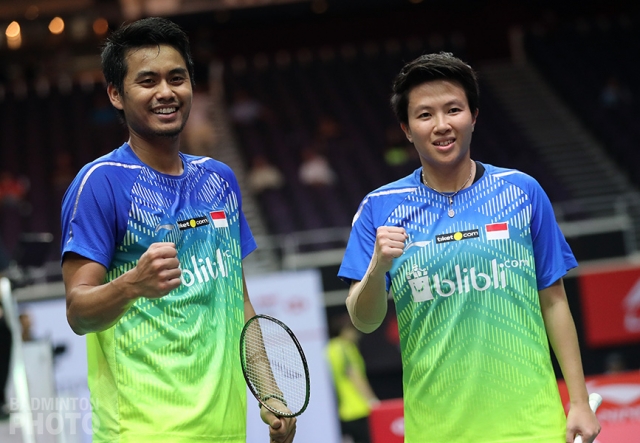

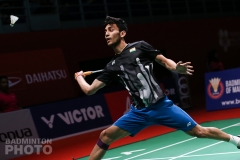
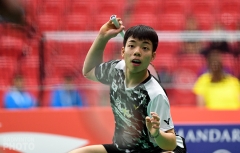
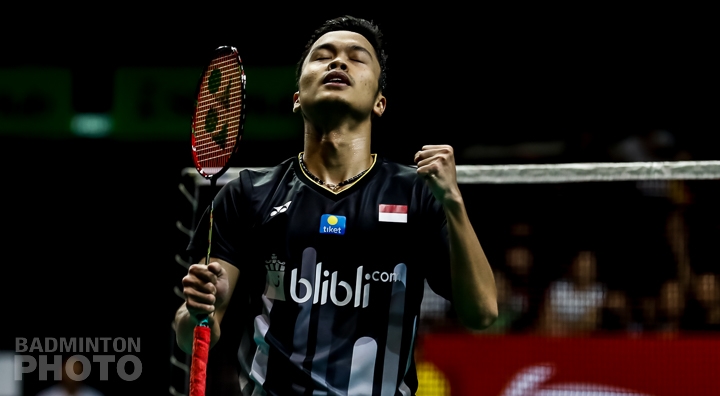
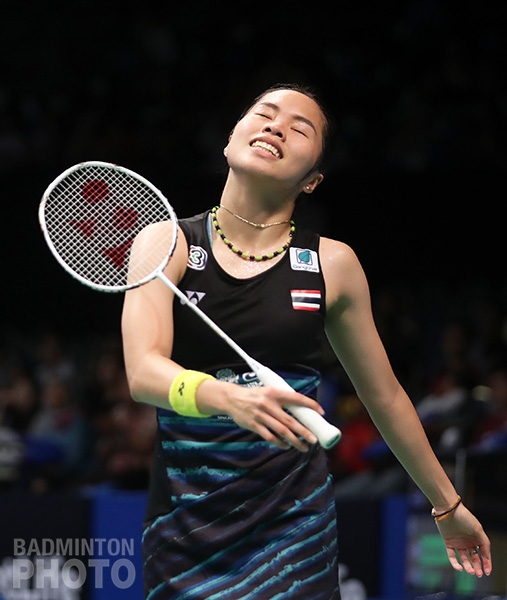

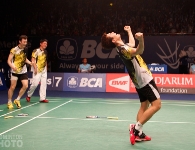
Leave a Reply